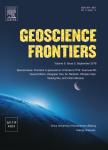A history of Proterozoic terranes in southern South America:From Rodinia to Gondwana
A history of Proterozoic terranes in southern South America:From Rodinia to Gondwana作者机构:Departamento de Petrología y Geoquimica IGEO(Universidad ComplutenseCSIC) Centro de Investigaciones Geológicas(CONICET-UNLP) 1900 La PlataArgentina Visiting Research Associate British Geological SurveyKeyworthNottingham NG12 5GGUnited Kingdom CICTERRA(CONICET-UNC) 5000 CordobaArgentina Departamento de Petrologia y Geoquimica IGEO(Universidad ComplutenseCSIC) Research School of Earth Sciences The Australian National University Instituto de Agrobiología y Recursos Naturales CSIC 37071 SalamancaSpain
出 版 物:《Geoscience Frontiers》 (地学前缘(英文版))
年 卷 期:2012年第3卷第2期
页 面:137-145页
核心收录:
学科分类:070903[理学-古生物学与地层学(含:古人类学)] 0709[理学-地质学] 07[理学]
基 金:Financial support over the last years was through Spanish MEC and MICINN grants CGL2005-02065/BTE and CGL2009-07984 UCM-Santander grant GR58/08 Argentinian grant 1728 AR PICT 1009
主 题:Paleoproterozoic Cratons Grenvillian Neoproterozoic rifting SW Gondwana assembly
摘 要:The role played by Paleoproterozoic cratons in southern South America from the Mesopro- terozoic to the Early Cambrian is reconsidered here. This period involved protracted continental amal- gamation that led to formation of the supercontinent Rodinia, followed by Neoproterozoic continental break-up, with the consequent opening of Clymene and Iapetus oceans, and finally continental re-assembly as Gondwana through complex oblique collisions in the Late Neoproterozoic to Early Cambrian. The evidence for this is based mainly on a combination of precise U-Pb SHRMP dating and radiogenic isotope data for igneous and metamorphic rocks from a large area extending from the Rio de la Plata craton in the east to the Argentine Precordillera in the west and as far north as Arequipa in Peru. Our interpretation of the paleogeographical and geodynamic evolution invokes a hypothetical Paleoproterozoic block (MARA) embracing basement ultimately older than 1.7 Ga in the Western Sierras Pampeanas (Argentina), the Arequipa block (Peru), the Rio Apa block (Brazil), and probably also the Paraguaia block (Bolivia).



